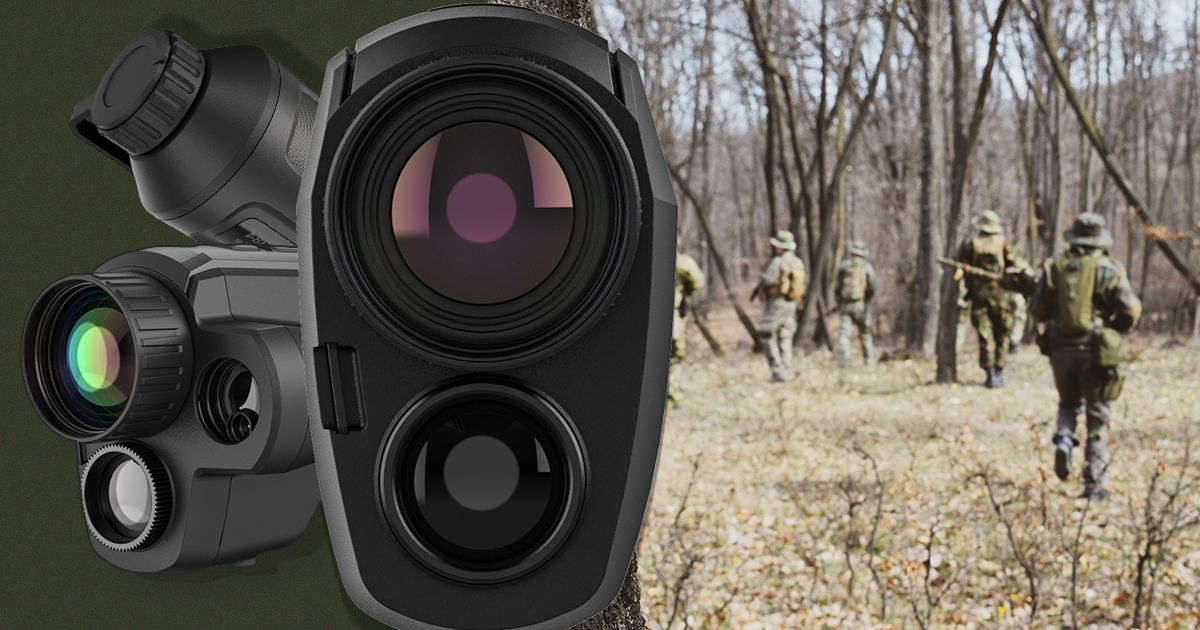All information is provided on the corresponding built-in display, which makes it possible to see everything in a wide resolution.
It is possible to see through smoke, fog, dust and other obstacles that would block visibility.
Together with Control.ua specialists, we will try to figure out how to choose the right thermal imager, their varieties and other features.
Types of thermal imagers
Globally, thermal imagers can be divided into two main categories: monocular and binocular.
The first variety is more common and available.
They are able to work in the distance range from 250 to 2600 meters, depending on the selected model.
The advantage of the monocular is its low weight and compact size, which makes it possible to use it with one hand.
Binocular thermal imagers will become a more relevant solution for long-distance object identification and long-term observation.
The main advantage is a long working distance - from 2000 meters and more.
They have high autonomy - up to 16 hours, and monoculars - up to 8 hours.
Weigh more than their opponents, and also cost much more.
With the rest, they are the same - they have a high resolution matrix, viewing angle, refresh rate, focus and sensor technology.
Which thermal imager is suitable for the military
Taking into account the conditions in which we have to fight with the occupiers, the choice should be treated as responsibly as possible.
The matrix can vary in a wide range - from 128x96 pixels to 1024x768 pixels.
It is recommended to choose models in which the resolution of the matrix is not lower than 400x300 pixels, in this case it will be possible to see the necessary objects at a great distance.
An important selection criterion is the update frequency of the matrix in the thermal imager, which can vary from 9 to 120 Hz.
The minimum indicator that is suitable for comfortable work is from 25 Hz, but ideally - from 50 Hz.
This makes it possible to see a clearer and smoother image.
As for the detection distance, everything is simple here - the more, the better.
But the minimum permissible detection distance is from 600 meters for monocular models and 1000 meters for binocular models.
Do not forget about the viewing angle - this is the space that you will be able to see during observation.
If you plan to look at a close distance, you need to choose models with a large viewing angle, and for observation at a distance of 1 kilometer, there may be models with a narrow viewing angle.
Remember the focal length:
6-26 mm.
These are wide-angle models with a large viewing angle, which reduce the scale of the image.
35-50 mm.
Standard models with classic image scale.
70-200 mm.
A telephoto lens with a narrow field of view, which increases the scale of the image.
Be sure to pay attention to the autonomy of work and the weight of the device.
The lighter the device, the easier it will be to use for a long time.
It is necessary to choose models whose weight is not more than 1 kilogram.
Battery life is a very important indicator.
At a minimum, it should support work for 5 hours, and the optimal indicator is 6-10 hours.
The thermal imager has the option of choosing the appropriate palette for comfortable observation - Black Hot, White Hot and Color Mode.
Depending on the manufacturer, the names may change.
With their help, you can optimize the device for specific tasks, as well as respond to changes in observation conditions.
Ideally, the device will have additional functions:
HD display.
Thanks to such a display, it is possible to achieve a detailed image for a clear image and comfortable identification.
Memory card slot.
The presence of a memory card slot allows you to save images and photos directly to the memory card.
But the presence of such a slot can affect its tightness and protection against moisture.
Wi-Fi module.
The presence of an access point allows the user to connect the device to a smartphone or tablet.
With the app, you can mount the device on a tripod and stream video to your smartphone.
In the application, you can change modes and palettes and download photos and videos from the thermal imager.
Range-finder.
There are models with a built-in laser rangefinder, which makes it possible to measure the distance to the target.
And special attention should be paid to the technology of the sensors installed inside the device.
They can be of two varieties: a-Si (budget with lower sensitivity) and VOx (more modern and expensive technologies with high sensitivity, larger temperature range).
If you are interested in these devices, you can find them on the website https://control.ua/.
There you will find more information about these models, as well as other thermal imaging devices for surveillance, patrol and various search and rescue operations.
